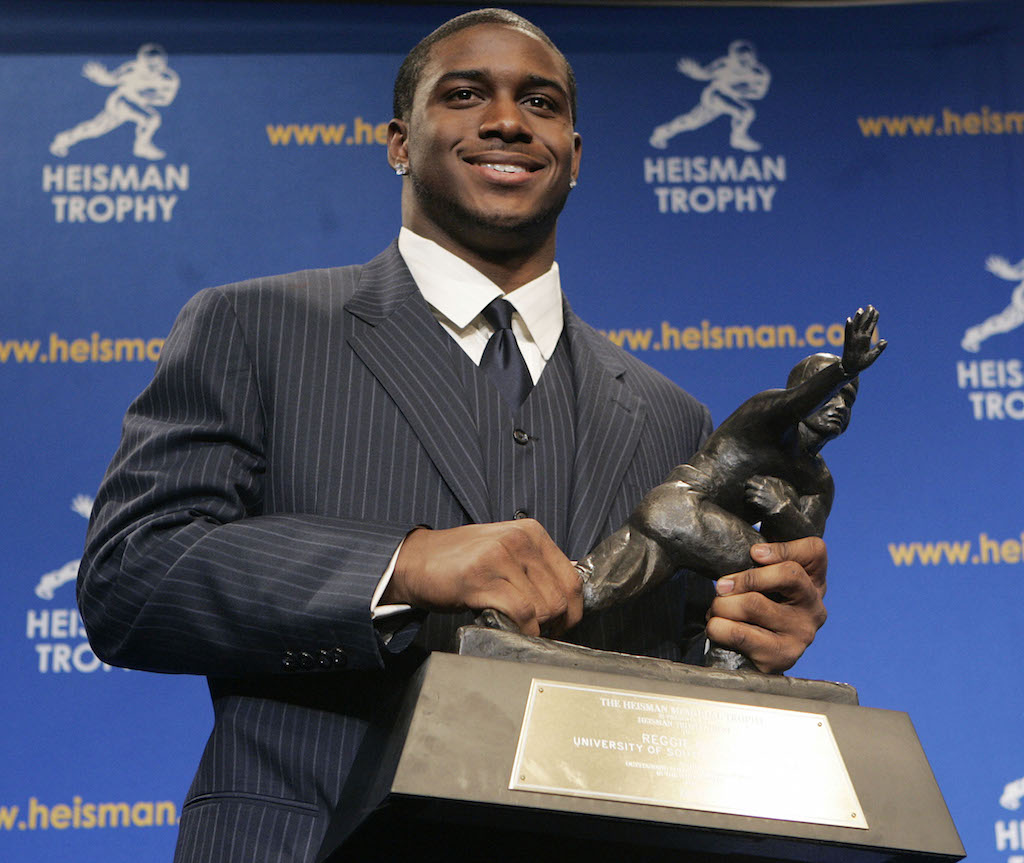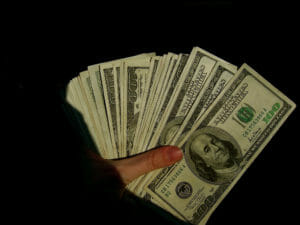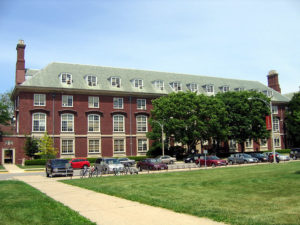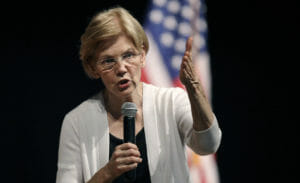Where Is Reggie Bush’s Heisman Trophy?
The Heisman saga of the former USC running back reveals the hypocrisy of the NCAA, the governing body of American college sports. Reggie Bush had to forfeit his 2005 Heisman Trophy in 2010 for violation of NCAA rules. (Frank Franklin II / AP)
Reggie Bush had to forfeit his 2005 Heisman Trophy in 2010 for violation of NCAA rules. (Frank Franklin II / AP)
As Oklahoma quarterback Baker Mayfield rose from his seat to accept the 82nd Heisman Trophy, he looked out on an audience of absent former winners. Numerous honorees, including Gary Beban of UCLA (1967) and Tim Brown of Notre Dame (1987), chose not to attend the ceremony because of disagreements with the Heisman Trust board over distribution of funds for charity and research into chronic traumatic encephalopathy, or CTE.
Two others Mayfield did not see in the audience—University of Southern California running backs O.J. Simpson (1968) and Reggie Bush (2005)—were not present for different reasons. Although Simpson allegedly murdered two people, Bush was guilty, by NCAA standards, of a far more serious crime: He and his family accepted money and gifts while he was still in college. We have a fairly good idea where Simpson’s trophy is—at last sighting it was in a safety deposit box in a Philadelphia bank after being purchased in auction by a steel company owner.
We’re less certain about where Bush’s trophy is—or rather, trophies. In 2010, an NCAA investigation revealed two members of Bush’s family had received a rent-free home and cash from agents hoping to sign him. This was in flagrant violation of the NCAA’s rules prohibiting compensation of college athletes.
Bush was asked to return his trophy to the Heisman Trophy Trust. An exact copy of Bush’s Heisman on display at Southern Cal was also returned and all photos or references to him at the school were removed—his portrait was even taken down from the gallery of former Heisman winners (although Simpson’s photos and a copy of his trophy are still proudly displayed at the school).
Late in 2013, The Washington Post was able to determine the whereabouts of every Heisman Trophy since the University of Chicago’s Jay Berwanger won the first in 1935. The most unlikely home for a Heisman is a restaurant in Garrison, N.Y., about 40 miles north of New York City, where former Notre Dame star Paul Hornung’s award resides. (Hornung, a Pro Football Hall of Famer who won the Heisman in 1956 while starting for Notre Dame, auctioned it to fund a scholarship program at his alma mater.)
Where, though, is Reggie Bush’s trophy? Or more precisely, where are his trophies, the original and the replica?
Bush did not return the award promptly. Rumors abounded that he did not give it back until the fall of 2011 or perhaps as late as the winter of 2012, over a year after the NCAA made its report. Working on a story for The Village Voice at the time, I badgered the Heisman Trust people to find out what had happened to it—was it destroyed or, even worse, was it recycled with a new brass plate for a subsequent winner? For that matter, where was USC’s replica, said by a PR person in the Trojan athletic department to be an exact copy “in every detail.”
I spent two weeks peppering the Heisman Trust office with phone calls and emails. An assistant finally told me, “Look, I don’t know if anyone here knows exactly where it is. I mean, there’s a record somewhere.”
By “it,” do you mean Bush’s original or the copy, or both? I asked. “Both of them are in a storage facility in Manhattan where we put memorabilia and other stuff when we moved from the Downtown Athletic Club” was the response. (The Downtown Athletic Club was the longtime home of the Heisman until 9/11, when the building was severely damaged and the Trust moved uptown.)
This was confirmed last week when I again peppered the Heisman Trust with requests for the whereabouts of Bush’s trophy. Tim Henning, coordinator at the Heisman Trust, said simply, “We don’t disclose that information, but I can assure you it has not been destroyed.” Someone further down on the Trust totem pole told me that both trophies were safe in a warehouse outside New York City.
Why, I asked, were they keeping the trophy? The response, “I honestly don’t think anyone here can answer that question.”
The voting for the most famous award in American sports is by 870 media people across the country, and the 57 former Heisman winners. Oh, yes, and one fan vote chosen in a contest sponsored by Nissan.
According to the Heisman Trust website, the trophy is awarded to “The outstanding college football player whose performance best exhibits the pursuit of excellence with integrity. The winners of the trophy epitomize great ability combined with diligence, perseverance, and hard work.”
Reggie Bush certainly exemplified all of these criteria, with the exception of one, “integrity.” That is, integrity defined by NCAA standards.
The NCAA has a vise-like grip on American college sports. An organization of a few hundred people headquartered in Indianapolis, it says it is “dedicated to the well-being and lifelong success of college athletes.” The NCAA lists seven core values it is committed to, the first being “the collegiate model of athletics in which students participate as an avocation, balancing their academic, social and athletics experiences.”
“Avocation” is a code word for amateur, which Merriam-Webster defines as “a subordinate occupation pursued in addition to one’s vocation especially for enjoyment; a hobby.” Everyone who follows American college sports, particularly football and basketball, would reply: “Subordinate occupation? Hobby? My ass!”
The NCAA is the sole guardian of the gates through which millions of American high school students must pass before they can play college sports—which most of them must do to make it to the National Football League and National Basketball Association. Only a tiny fraction of them are talented enough to be funneled into the pros. Per a 2013 NCAA study, 1.5 percent of the football players will make it to the pros and 1.1 percent of the basketball players will see the NBA.
The talents of these athletes, while they’re in college, are milked for all the revenue they’re worth, after which many who don’t get pro contracts are thrown into an uncaring world without even the rudiments of a basic college education. (The numbers are staggering. The NCAA alone generates a reported $871.6 million a year, mostly in broadcast rights, of which about 60 percent is distributed to the Division 1 schools. In 2010 the top 15 football schools took in more than a billion dollars.)
But the real villain in this story isn’t the NCAA, which is merely doing what colleges hire it to do: provide a “steel curtain” legal defense against those who would challenge a college’s power to control the earning potential of student-athletes—all under the sham label of amateurism. Of course, college football and basketball players are amateurs in only one very real sense: They don’t get paid.
As a de facto lawmaking body, the NCAA prohibits students from cashing in on their talent through endorsements, autograph signing, paid appearances, et al.—with one exception.
In 2010, A.J. Green, a wide receiver for the University of Georgia who went on to the Cincinnati Bengals, was suspended for four games for selling an autographed jersey for $1,000—“spring break cash” as Green told the press. The previous year, Dez Bryant, a receiver for Oklahoma State and now for the Dallas Cowboys, was suspended for the last 10 games of his college career for allegedly communicating with a sports agent.
These are just two of the better-known athletes whose infractions of NCAA bylaws took them off the field. Never mind the lack of any ethical basis for the punishments. Since college athletes have no union or any other kind of representation, the NCAA has always been able to impose its often arbitrary and always self-righteous will on them.
Contrast the cases of Reggie Bush, Green and Bryant with that of Texas A&M’s Johnny Manziel—aka Johnny Football—who won the Heisman in 2012. In the summer of 2013, what seemed like a mountain of evidence was exposed by a sports agent who had videos of Manziel signing autographs in a hotel room for what was reported as $7,500. The NCAA jumped on the case, but quickly concluded, to everyone’s shock and surprise, that there was no “real” evidence—despite the videos—that Manziel was guilty of any infractions of NCAA rules, and his only punishment would be a suspension for the first half of the Aggies’ opening game against the Rice Owls. (Manziel passed for three touchdowns in the second half, and the Aggies won easily, 52-31.)
So essentially, Manziel’s punishment amounted to getting half the afternoon off on a day when he wasn’t likely to be playing the whole game anyway.
Oh, yes, there was one more penalty for Johnny. He had to address the entire team about the lessons he had learned. What he could have told his teammates was that if your family has money, like Manziel’s family, and can afford a first-rate law firm, you can beat the NCAA, and the worst they can make you do is stand in front of a locker room full of jocks and make a BS speech.
The difference between Manziel and other college football players whom the NCAA has come down on is not that he is white and they were black, though there is that difference, but that Johnny’s family could afford the legal muscle to prove once again what U.S. district judge Juan Burciaga called it in a 1981 antitrust lawsuit: “a classic cartel.”
The NCAA is a cartel, but the Heisman Trust doesn’t have to be. If the 900-plus voters who choose the winner every year were allowed to vote on giving Reggie Bush back that Heisman sitting in a cold, lonely warehouse, wouldn’t at least a few people advocate for some leniency, that Bush has been punished enough, and vote to return it to him? If the Heisman Trust doesn’t intend to be forgiving, sooner or later, then why are they keeping Bush’s trophy at all?
Your support matters…Independent journalism is under threat and overshadowed by heavily funded mainstream media.
You can help level the playing field. Become a member.
Your tax-deductible contribution keeps us digging beneath the headlines to give you thought-provoking, investigative reporting and analysis that unearths what's really happening- without compromise.
Give today to support our courageous, independent journalists.




You need to be a supporter to comment.
There are currently no responses to this article.
Be the first to respond.